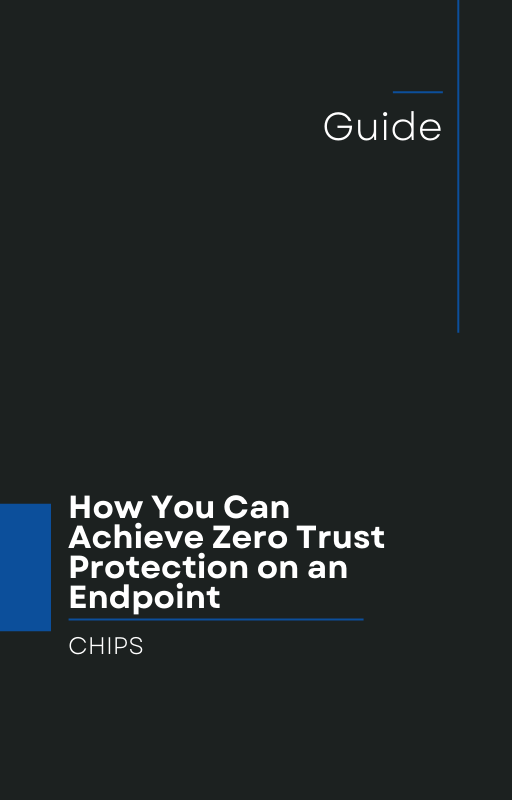In a recent article, Help Net Security reports that corporate boards are being pushed to “rethink their role in cybersecurity” — to shift from passive oversight into active engagement in how their companies defend against evolving threats. Help Net Security
The stakes have never been higher. As attacks grow smarter, more persistent, and more integrated with identity, fraud, and innovation vectors, businesses must adopt stronger strategies — including the move from “Detect and Respond” to “Isolation and Containment.”
Below, we explore what’s changing, why it matters, and why business owners should take a serious look now at adopting AppGuard via CHIPS.
Why Boards Are Getting Pulled into Cybersecurity Strategy
The Help Net Security article outlines three areas where boards should heighten oversight: ransomware, cyber-enabled fraud, and the interplay of innovation and security.
-
Ransomware is evolving
Attackers no longer rely solely on encrypting files. They increasingly target identity systems, helpdesks, and cloud credentials. Social engineering campaigns now aim to trick help desk staff into resetting multifactor authentication settings or granting access — bypassing traditional defenses altogether. -
Fraud is entering the boardroom
Threats like business email compromise, SMS phishing, and strategic, long-term scams are causing material financial damage. Boards need to understand how money flows within their organizations and where fraud can strike. -
Security must keep pace with innovation
As companies embrace digital transformation and cloud adoption, attackers can more easily move laterally between systems via compromised single sign-on credentials. Boards must insist that security be embedded into the development and launch phases of new products — not bolted on afterward.
The article urges boards to demand agile security reporting tied to business outcomes (e.g. reduced fraud, lower downtime) rather than abstract metrics.
In short: cybersecurity is no longer a compliance checkbox. It’s central to business resilience, reputation, and growth.
From “Detect & Respond” to “Isolation & Containment”
Many organizations today rely heavily on detection and response strategies: monitoring logs, flagging anomalies, isolating compromised systems after the fact, and cleaning up. But attackers are quicker, more stealthy, and more adaptive than ever.
That’s why the shift now is toward isolation and containment — to stop threats in their tracks, prevent lateral spread, and limit the blast radius before an attack becomes a major breach.
Here’s how the two approaches differ:
| Approach | Focus | Timeline | Risk | Ideal for Today? |
|---|---|---|---|---|
| Detect & Respond | Identify malicious activity, then remediate | After breach signs appear | High — threat already inside | Not sufficient alone |
| Isolation & Containment | Prevent attacker movement and damage | Immediately at onset of anomalous behavior | Lower — limits spread | Essential for modern threats |
Rather than waiting until an attacker has already established footholds, containment-based solutions proactively block unauthorized processes or behaviors. This reduces the window attackers have to escalate privileges, move across systems, or exfiltrate data.
In other words: don’t just chase the attacker, stop them cold.
Why AppGuard Is a Game-Changer
For over a decade, AppGuard has delivered endpoint protection through isolation and containment, not just detection. Its track record is proven — and now, it's available for commercial use.
Key strengths:
-
Pre-execution isolation: It can prevent unknown or zero-day attacks by isolating untrusted or suspicious processes before they can execute broadly.
-
Minimal dependence on signatures: Because it focuses on behavior, AppGuard doesn’t rely solely on signatures or heuristics that attackers can evade.
-
Low performance impact: AppGuard is lightweight and designed not to get in the way of legitimate workflows.
-
Reduced attacker dwell time: By blocking lateral movement early, it shrinks the time an attacker can operate within your network.
-
Ten-year track record: It has been proven in varied, high-stakes environments — so you’re not betting on untested tech.
By adopting AppGuard, organizations stop trusting that detection alone will give them enough time to respond. Instead, they build in resilient, internal defenses that automatically contain threats.
What This Means for Business Owners
If you’re a business owner (or sit on the board or executive team), here’s what to consider:
-
Elevate cybersecurity as strategic: It’s no longer just the CISO’s domain. Boards must ask informed, outcome-oriented questions about how the company detects, contains, and remediates threats.
-
Question overreliance on detection alone: Modern threats often move faster than alerts. The question isn’t if you’ll be attacked — but how far the attacker can go before being stopped.
-
Insist on “Containment-First” thinking: The mindset shift from “find it and fix it” to “stop it before it spreads” is crucial.
-
Choose proven tools with strong history: Don’t experiment with untested defenses when risks are so high.
Let CHIPS Help You Make the Shift
At CHIPS, we believe business owners must go beyond “detect and respond.” They must embed isolation and containment into their defenses. That’s why we champion AppGuard — the endpoint protection solution with a decade of proven success, now available for commercial use.
If you want to protect your organization before attackers gain the upper hand, let’s talk. Reach out today, and we’ll show you how AppGuard can help you make the leap from reactive defense to proactive containment.
Contact us at CHIPS to schedule a consultation — and start building a security posture that stops threats fast, not after the damage is done.
Like this article? Please share it with others!

September 30, 2025

Comments